How to Create a Beautiful One-Page Website
Trends. They’re everywhere. Some may seem absurd – think of Mean Girls’ Regina George and her cut out top. However, other times they make total sense. Think: mom jeans. In the world of web design, one-page websites are one trend that’s growing due to its functionality. In essence, it’s a site that presents all of your content onto one long, scrolling page. Rather than distinguishing a homepage from the other pages, content is split into different sections using strips. Here, the menu items link to each of these sections instead of separate pages.
When creating a website, more and more web designers are following this one-page trend. Why? Because it’s simple, clean and offers quite an impressive design. In this guide, we’ll explain why and how to create a one-page website for your business.
01. Decide if it’s a proper fit for your business.
There are two main schools of design: the one-page and the classic. Depending on your type of business and what features and priorities you have for your website, one might be a better fit than the other – it’s worth weighing out your options.
A one-page website has a strong design that’s both minimalistic and organized. It’s typically more image heavy accompanied by a small amount of text. The overall long scrolling design makes it easy to get creative while crafting a story where you have full control over what order viewers see your content in. The layout enhances a user’s experience by allowing them to consume your content in a very linear way instead of getting lost in multiple pages. The format is well adapted for mobile sites and tablets, too.
A one-page website is also easy to maintain and requires fewer resources than a classic website. So after reading about this website trend, you’re probably already envisioning yours in this grand format. But first, you need to ask yourself, “is it a good fit for my business, specifically?” From the most creative to more traditional businesses, this format has the potential to look amazing. If you have short form content, like a landing page, a freelance website, photography portfolio, a wedding website or any event-related website, then it’s worth considering.
A classic website is what most people think of when they envision a site – there is a homepage accompanied by other pages, such as a contact page, a service page, and an FAQ page. Basically, the main reason to choose this design format over a one-pager is if you have tons of content that is absolutely necessary to include on your website – such as one that requires multiple pages to sell a variety of products or services. This is because you can organize each piece of content into its own page of your website and provide long and thorough descriptions. For example, if you have a blog, it’s wise to use this to allow a user to easily browse through your articles individually.
02. Devise a plan for your content.
If you’ve decided that this format is the perfect fit for you, then you can get started with crafting your beautiful one-page website. First, you need to lay out all of your content strategically. Creating a one-page website is the perfect opportunity to control the order of how your site is viewed, so make sure that it’s logical and intuitive.
Begin with a hierarchy where you imagine your visitors’ journey through your site. They first need to be enticed by the main message that you want to convey from the get-go – in other words, what you want to place ‘above the fold’ (i.e., what a viewer sees before scrolling down your website). For every website, you’ll need an ‘About’ section and a dedicated area to display your contact information.
What comes in between can include your offering, a CTA, a meet the team, services and products, testimonials, FAQ section, and a photo gallery – depending on what information you want and need to provide. Prioritize the order of your content as this will prove extremely important later on. Also, remove any extraneous information – with words, less is more here in terms of strong design. Overall, your plan should be to keep things as organized and simple as possible.
03. Choose a website template.
Once you’ve devised a plan for your content, you’ll need a template that sets you off on the right foot by including all the elements a one-pager website needs, like an anchored menu, strips and columns, a social bar, a rich footer and more.
There are hundreds of fully-customizable one-page website templates created by our designers and available for any kind of business. The fantastic thing about these templates is that you can change everything from the header right down to the footer, to customize and make it completely yours. Let your creative imagination flourish with these endless possibilities!

